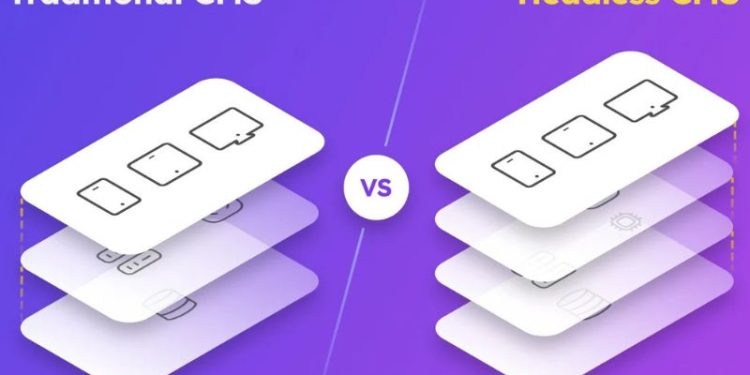A smooth user experience and effective content distribution are dependent on the content management system (CMS) used in the ever-changing field of web development.
Particularly among companies trying to improve their online presence, the argument between headless and traditional CMS has gathered a lot of steam.
Using web development services and custom mobile app development, this article compares and contrasts headless and standard CMS platforms and offers advice to help you select the best one for your requirements.
Knowing Conventional CMS
Classical content management systems (CMS) like WordPress, Joomla, and Drupal are made to handle a website’s front and back ends. These systems provide a unified method by which users may produce, modify, and publish material via a single interface.
Because themes and templates are included into traditional CMS platforms, non-technical users may create and update websites more easily.
But occasionally this all-in-one strategy might restrict scalability and flexibility, especially when it comes to distributing content over several channels.
Exploring Headless CMS
The front-end presenting layer and content management are separated by a headless CMS. Accordingly, the CMS is in charge of producing and storing material, but it is handled differently usually by way of APIs.
Platforms without a head include Contentful, Strapi, and Sanity. More adaptability and scalability are offered by this method, which makes it possible to provide content to websites, mobile apps, and Internet of Things devices.
A headless CMS can be a potent alternative for companies wishing to combine web development services with bespoke mobile app development.
Main Disparities Between Conventional and Headless CMS
Their architecture is where headless and conventional CMS diverge most. Whereas headless CMS keeps the front and back ends apart, traditional CMS platforms combine both. Practical changes follow from this architectural distinction:
- Flexibility and Scalability: headless CMS provides more flexibility in content distribution to different channels. When material extends beyond the web, traditional CMS could find it difficult to scale.
- Customization: As developers can utilize any front-end technology, headless CMS enables greater customization. Often, the themes and templates included with traditional CMSs restrict its capabilities.
- User Experience: Non-technical people may find traditional CMS to be an easier all-in-one option. Setting up and running a headless CMS could need more technical know-how.
- Performance: By tailoring content distribution for particular platforms, headless CMS can improve performance. Because of their monolithic design, traditional CMS may perform more slowly.
Features of Conventional CMS
Companies that want an easy-to-use, all-in-one solution will find traditional CMS platforms to be perfect. Their advantages are many:
- Ease of Use: Traditional CMS solutions are approachable by non-technical users and have pre-designed themes and templates.
- Cost-Effective: Traditional CMS can be an economical option with less setup and maintenance expenses for websites that are small to medium-sized.
- Community Support: Large communities and copious documentation on well-known traditional CMS platforms offer plenty of help and resources.
Advantages of Headless CMS
Businesses that need great scalability and flexibility especially those combining web development services with custom mobile app development will find headless CMS platforms to be ideal. Main benefits consist of:
- Multi-Channel Content Delivery: Content delivery to several platforms using a headless CMS can improve user experience on all devices.
- Future-Proof: Headless CMS can more readily adjust when new technologies come out, guaranteeing its long-term existence.
- Developer Freedom: Use of chosen front-end technologies by developers enables more creative and bespoke solutions.
Choosing the Right CMS for Your Needs
Think on the particular requirements of your company while choosing between a headless and a standard CMS. A classic CMS could be your best option if you need a straightforward, reasonably priced system with little technical overhead.
Still, a headless CMS might offer the scalability and flexibility you require if your main goal is to give a flawless multi-channel experience and you have the necessary technological resources.
Conclusion: Making the Right Choice
Success of your digital projects depends on selecting the appropriate CMS platform. Headless and traditional CMS can meet various business requirements and have special advantages of their own.
Whether you want to integrate custom mobile app development or complete web development services, you can choose wisely by knowing the distinctions and assessing your particular needs.
















